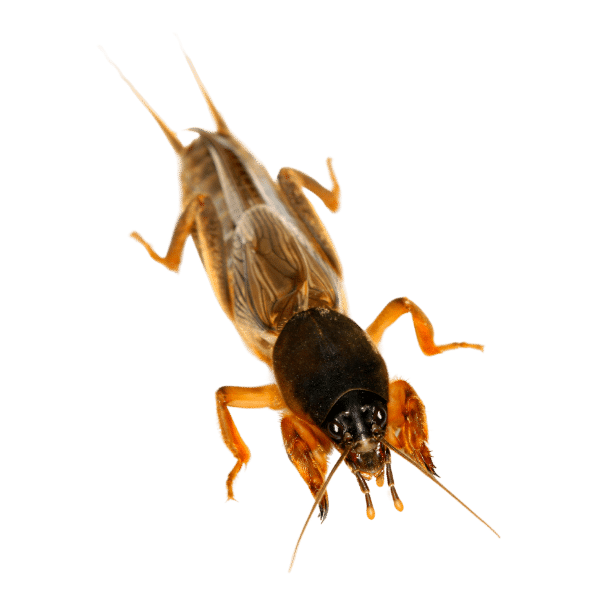Intro to the Insect:
Mole crickets are notorious pests in North Alabama, known for their destructive underground burrowing habits that damage turfgrass and soil. These nocturnal insects thrive in sandy or loamy soils, often found in well-maintained lawns, golf courses, and sports fields. North Alabama’s warm and humid climate creates favorable conditions for mole crickets, with their activity peaking in spring and summer. Their tunneling damages roots and disrupts the lawn surface, and their presence often attracts predators such as raccoons and birds, compounding the problem.
Which Ones Are Common in My Area and How Can I Identify Them?
The southern mole cricket (Scapteriscus borellii) and the tawny mole cricket (Scapteriscus vicinus) are the most common species in North Alabama. You can identify mole crickets by:
- Size: Adults are 1–2 inches long.
- Body Texture: Light to dark brown, with a velvety surface.
- Legs: Enlarged, spade-like forelegs for digging.
- Signs of Damage: Raised ridges and small mounds in the soil.
Mole crickets are elusive and mostly active at night, making their damage more noticeable than the insects themselves.
How Did I Get the Insect?
Mole crickets are drawn to moist, well-aerated soil and are often introduced through:
- Overwatered lawns with poor drainage.
- Sandy or loose soil that allows for easy tunneling.
- Nearby untreated areas where they migrate into residential properties.
Understanding their preferences can help mitigate conditions that attract them.
What Effects Does This Have on My Lawn or Outdoor Space?
Mole crickets create significant damage to turfgrass and soil:
- Grass roots are severed, causing thinning or brown patches.
- Tunneling disrupts the lawn surface, leaving ridges and mounds.
- Secondary predators such as raccoons dig up lawns to hunt for mole crickets.
- Loose, tunneled soil is more prone to erosion during heavy rain.
The combination of direct and indirect damage can leave your lawn looking unsightly and uneven.
How Long Do They Live?
Mole crickets have a one-year lifecycle. Adults emerge in spring to mate, and nymphs grow and feed during summer. By fall, they burrow deeper into the soil to overwinter, slowing their activity until the next season.
How Do I Prevent Them?
Preventing mole crickets involves lawn care and habitat modification. Recommendations include:
- Improve Drainage: Reduce standing water and avoid overwatering.
- Compact Soil: Minimize loose, sandy conditions by maintaining soil density.
- Encourage Predators: Birds and beneficial nematodes can help reduce mole cricket populations.
Regular monitoring and maintenance can limit mole cricket activity and reduce damage to your lawn.
How Guardian South Helps:
Our pest control specialists provide soil treatments targeting mole crickets at all lifecycle stages. We also repair damaged turf and offer preventative care to keep your lawn healthy and mole cricket-free.

